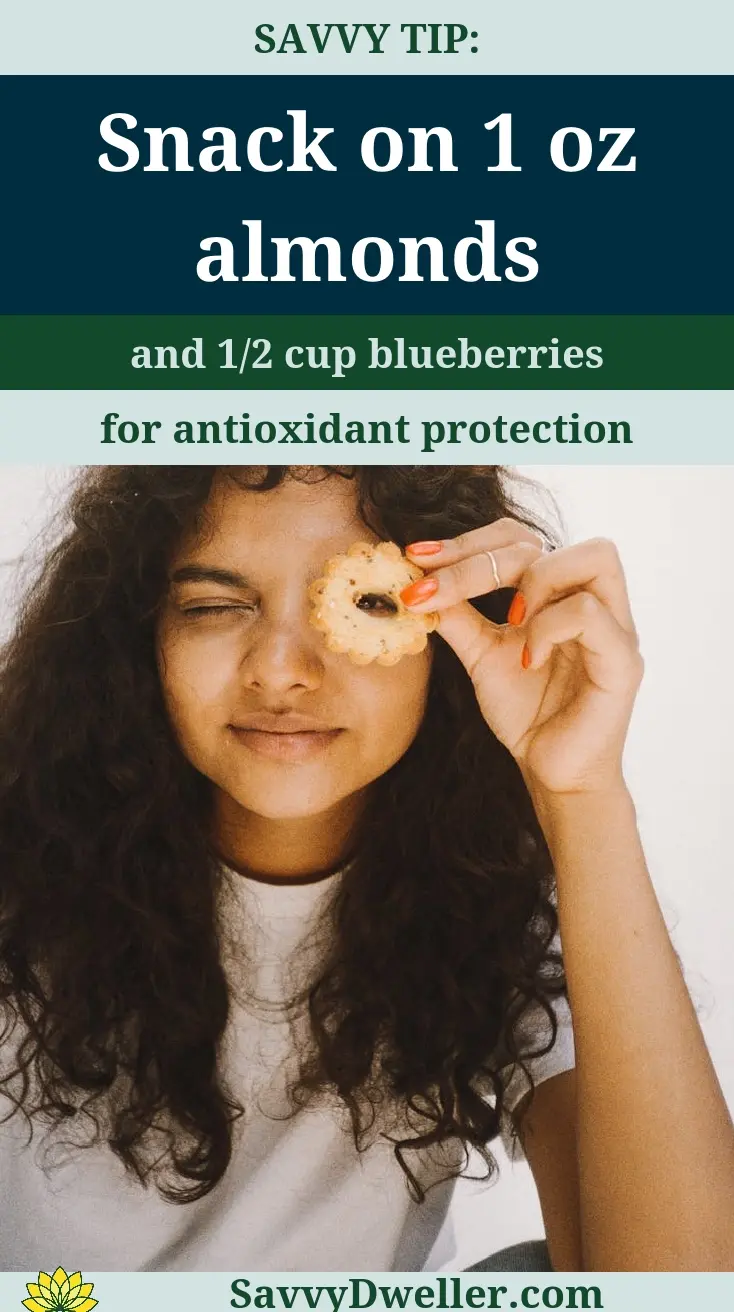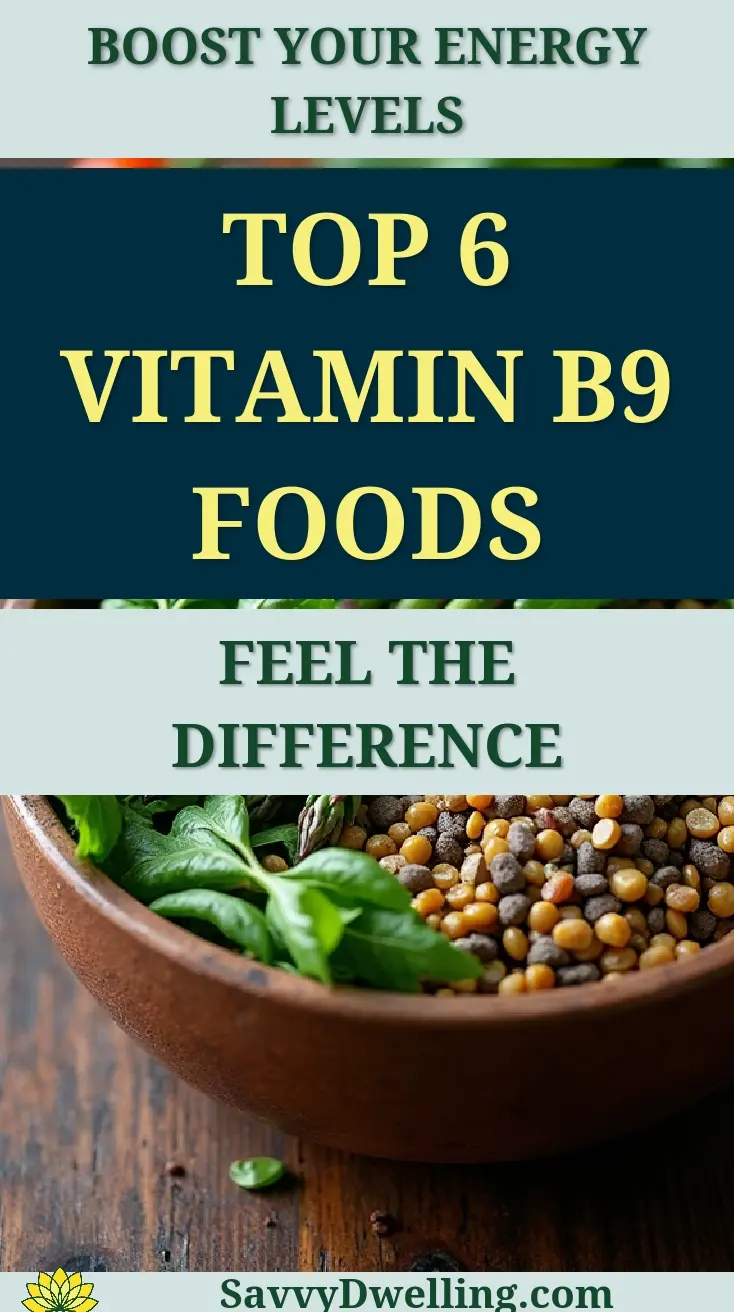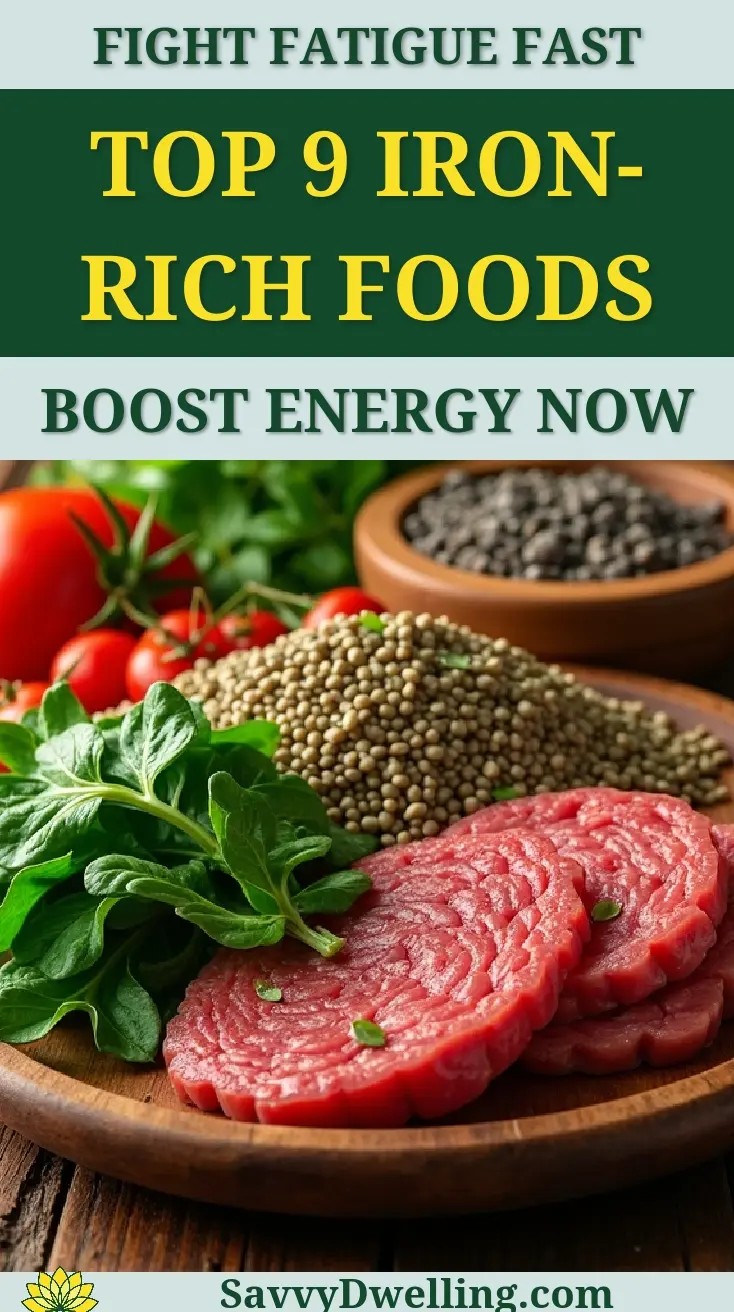10 Science-backed Foods That Naturally Support Sharper Vision and Healthier Eyes
Struggling with eye strain from screen time, or worried about your vision getting worse as you age? You’re not alone in feeling concerned about protecting one of your most precious senses. Many people notice changes in their eyesight but don’t realize that what they eat plays a huge role in eye health.
The good news is that specific nutrients found in everyday foods can genuinely support your vision and help protect your eyes from age-related changes. We’ve researched the science behind eye nutrition and identified ten powerhouse foods that deliver the exact nutrients your eyes crave. These aren’t expensive superfoods or hard-to-find ingredients—they’re accessible options you can start adding to your meals today.
Contents
- At a Glance: The Best Solutions
- 1. Leafy Green Vegetables
- 2. Fatty Fish Rich in Omega-3s
- 3. Orange Vegetables: Carrots and Sweet Potatoes
- 4. Eggs: Nature’s Eye Health Package
- 5. Colorful Berries and Antioxidant-rich Fruits
- 6. Nuts and Seeds: Vitamin E Powerhouses
- 7. Citrus Fruits: Vitamin C Champions
- 8. Bell Peppers: Colorful Nutrient Boosters
- 9. Whole Grains: Foundation Foods for Eye Health
- 10. Lean Meat and Poultry: Zinc Sources
- The Science Made Simple: Why These Foods Support Eye Health
- Common Mistakes to Avoid When Eating for Eye Health
- Frequently Asked Questions
- Closing Thoughts
- Sources:
At a Glance: The Best Solutions
| Food | Key Nutrients | Eye Health Benefits | Serving Size |
|---|---|---|---|
| Leafy Greens | Lutein, Zeaxanthin | Supports macular health | 1-2 cups daily |
| Fatty Fish | Omega-3 DHA/EPA | Aids dry eye relief | 2-3 servings/week |
| Carrots & Sweet Potatoes | Beta-carotene, Vitamin A | Supports night vision | 1/2 cup daily |
| Eggs | Lutein, Zeaxanthin, Zinc | Protects retinal tissue | 1-2 eggs daily |
| Berries | Anthocyanins, Vitamin C | Shields against oxidative stress | 1/2 cup daily |
| Nuts & Seeds | Vitamin E, Omega-3s | Guards against age-related changes | 1 oz (handful) daily |
| Citrus Fruits | Vitamin C | Supports blood vessel health | 1 medium fruit daily |
| Bell Peppers | Vitamin C, Carotenoids | Aids collagen production | 1/2 cup daily |
| Whole Grains | Zinc, Vitamin E, Niacin | Supports overall eye function | 3-4 servings daily |
| Lean Meat | Zinc | Helps vitamin A absorption | 3 oz serving 2-3x/week |
1. Leafy Green Vegetables
Key Nutrients in Dark Leafy Greens
Spinach, kale, and collard greens are packed with lutein and zeaxanthin-two powerful carotenoids that concentrate in the macula, the part of your eye responsible for sharp central vision. These antioxidants act like internal sunglasses, filtering harmful blue light and helping to reduce oxidative stress in eye tissue.
How Spinach, Kale, and Collards Support Eye Health
Regular intake of these greens has been linked to a lower risk of age-related macular degeneration (AMD) and cataracts. Because your body doesn’t produce lutein or zeaxanthin on its own, getting them through food is essential. Among the best foods for healthy eyesight, dark leafy greens stand out for their natural density of these protective compounds.
Simple Ways to Add More Greens to Your Home Meals
- Blend spinach into morning smoothies-it’s mild in flavor and disappears into fruit blends.
- Swap iceberg lettuce for chopped kale or collards in salads and wraps.
- Add a handful of greens to soups, stews, or scrambled eggs during the last few minutes of cooking.
- Use large collard leaves as low-carb wraps for sandwiches or grain bowls.
Quick Sautéed Spinach Recipe
- Heat 1 tablespoon olive oil in a skillet over medium heat.
- Add 2 minced garlic cloves and sauté for 30 seconds until fragrant.
- Toss in 4 cups fresh spinach and stir until wilted (about 2 minutes).
- Finish with a squeeze of lemon juice, a pinch of sea salt, and a dash of black pepper.
Easy Kale Smoothie Blend
- In a blender, combine 1 cup unsweetened almond milk, 1 frozen banana, and ½ cup frozen mango.
- Add 1 cup chopped kale (stems removed) and 1 tablespoon chia seeds.
- Blend until smooth-about 45 seconds.
- Serve immediately for a nutrient-dense drink that supports eye wellness.

2. Fatty Fish Rich in Omega-3s
Essential Omega-3 Fatty Acids for Eye Wellness
Fatty fish like salmon, mackerel, sardines, and tuna are rich in omega-3 fatty acids-specifically DHA and EPA. DHA is a major structural fat in the retina, while EPA helps regulate inflammation. These healthy fats are among the top foods for your eyes because they nourish delicate ocular tissues and support tear film stability.
How Salmon, Tuna, and Sardines Aid Dry Eyes
Chronic dry eye often stems from inadequate oil production in the meibomian glands along your eyelids. Omega-3s from fish help improve the quality of this oily layer, reducing evaporation and keeping eyes lubricated. Eating fatty fish twice a week is one of the most effective food for better eye health strategies to ease discomfort from dryness.
Home Cooking Tips for Omega-3 Rich Fish
- Choose wild-caught salmon when possible-it typically contains higher omega-3 levels.
- Keep canned sardines or tuna in your pantry for fast, nutritious meals.
- Avoid deep-frying; baking, grilling, or poaching preserves more healthy fats.
- Pair fish with lemon, herbs, or olive oil to enhance flavor without masking its benefits.
Baked Salmon with Herbs
- Preheat oven to 375°F (190°C).
- Place a 6-oz salmon fillet on a parchment-lined baking sheet.
- Drizzle with 1 tablespoon olive oil, then sprinkle with chopped dill, parsley, garlic powder, salt, and pepper.
- Bake for 12–15 minutes until the fish flakes easily with a fork.
Tuna Salad Power Bowl
- Mix one can of water-packed tuna (drained) with 1 tablespoon Greek yogurt, ½ teaspoon Dijon mustard, and diced celery.
- Serve over a bed of mixed greens, cherry tomatoes, cucumber slices, and avocado chunks.
- Top with pumpkin seeds for extra zinc and crunch-a combo that delivers multiple foods that are good for your eyesight in one meal.
Also See: 10 Health Benefits Of Walnuts and Other Nuts
3. Orange Vegetables: Carrots and Sweet Potatoes
Beta-carotene and Vitamin A Content
Carrots and sweet potatoes are rich in beta-carotene, a precursor to vitamin A-a nutrient critical for maintaining the eye’s photoreceptors. Just one medium sweet potato provides over 400% of your daily vitamin A needs, making these among the best food for eye sight choices for everyday meals.
How These Foods Support Night Vision
Vitamin A helps your eyes adjust to low-light conditions by supporting the production of rhodopsin, a pigment in your retina that enables night vision. Without enough vitamin A, you may experience night blindness or delayed dark adaptation. Including orange vegetables regularly is one of the most time-tested foods for better vision habits.
Creative Ways to Prepare Orange Vegetables
- Roast sweet potato wedges with smoked paprika and a touch of maple syrup.
- Grate raw carrots into oatmeal, muffin batter, or coleslaw for a subtle sweetness.
- Puree steamed carrots into tomato sauce or lentil soup for added nutrition.
- Mash boiled sweet potatoes with cinnamon and a splash of almond milk for a healthy side.
Roasted Sweet Potato Wedges
- Cut 1 large sweet potato into ½-inch wedges.
- Toss with 1 tablespoon olive oil, ½ teaspoon garlic powder, ¼ teaspoon cumin, and a pinch of sea salt.
- Spread on a baking sheet in a single layer.
- Roast at 425°F (220°C) for 25–30 minutes, flipping halfway, until crispy and tender.
Carrot Ginger Soup
- Sauté 1 chopped onion and 1 tablespoon grated ginger in olive oil until soft.
- Add 4 cups chopped carrots and 4 cups vegetable broth. Simmer for 20 minutes.
- Blend until smooth, then stir in a splash of coconut milk for creaminess.
- Season with salt, pepper, and a sprinkle of fresh cilantro-serving up a comforting bowl of food that is good for your eyes.
4. Eggs: Nature’s Eye Health Package
Lutein and Zeaxanthin in Egg Yolks
Egg yolks are a surprisingly rich source of lutein and zeaxanthin-two carotenoids that concentrate in the macula, the central part of your retina. Unlike many plant-based sources, the lutein in eggs comes packaged with healthy fats, which significantly boosts absorption. This makes eggs one of the most bioavailable food sources for these critical eye-protecting nutrients.
How Eggs Help Protect Your Retina
These nutrients act like natural sunglasses, filtering out harmful blue light and neutralizing free radicals that can damage delicate retinal cells. Regular consumption of eggs may support long-term macular integrity and help reduce the risk of age-related vision changes. The presence of zinc in yolks further enhances their role in maintaining retinal health and aiding vitamin A metabolism.
Healthy Egg Preparation Methods
How you cook your eggs matters. Avoid deep-frying or loading them with high-fat cheeses and processed meats. Instead, opt for methods that preserve nutrients while keeping added saturated fats low.
Veggie-Packed Scrambled Eggs
- Whisk 2 eggs with a splash of milk or water.
- Heat a nonstick pan over medium-low heat with 1 tsp olive oil.
- Add chopped spinach, diced bell peppers, and a few cherry tomatoes to the pan; sauté for 2 minutes.
- Pour in the eggs and gently stir until softly set.
- Season with black pepper and a pinch of turmeric for added antioxidant support.
Hard-Boiled Egg Snack Ideas
- Slice a peeled hard-boiled egg and serve on whole-grain toast with avocado.
- Chop and mix with Greek yogurt, Dijon mustard, and chives for a lighter egg salad.
- Pair with a handful of baby carrots or cucumber rounds for a balanced mini-meal.
5. Colorful Berries and Antioxidant-rich Fruits
Anthocyanins and Vitamin C in Berries
Berries like blueberries, blackberries, and raspberries burst with anthocyanins—pigments that give them their deep reds, purples, and blues. These compounds, combined with high levels of vitamin C, form a powerful duo that combats oxidative stress in delicate eye tissues. Among the best foods for eye health, berries offer targeted defense for the tiny blood vessels in your retina. Incorporating blueberries into your diet can also provide numerous additional health benefits, making them a fantastic choice for overall wellness. From improved heart health to enhanced brain function, the advantages of blueberries extend far beyond just eye health.
How Blueberries and Blackberries Shield Eye Cells
Anthocyanins improve blood flow to the retina and may help regenerate rhodopsin, a pigment essential for low-light vision. Regular intake of these antioxidant-rich fruits supports cellular resilience and may slow early signs of age-related visual decline. That’s why berries consistently rank among the top foods for healthy eyesight.
Fresh and Frozen Berry Options
Both fresh and frozen berries retain their eye-supporting nutrients. Frozen berries are flash-frozen at peak ripeness, locking in antioxidants. Choose unsweetened varieties to avoid added sugars that can negatively impact vascular health-including in your eyes.
Mixed Berry Parfait
- Layer ½ cup plain Greek yogurt in a glass.
- Add ¼ cup mixed berries (fresh or thawed frozen).
- Sprinkle with 1 tbsp chia seeds or chopped almonds for extra vitamin E.
- Repeat layers and top with a few mint leaves.
Antioxidant Smoothie Bowl
- Blend ½ cup frozen blueberries, ½ banana, and ¼ cup unsweetened almond milk until thick.
- Pour into a bowl and top with sliced strawberries, pumpkin seeds, and a drizzle of flaxseed oil.
- This combo delivers anthocyanins, vitamin C, and omega-3s-all vital for good foods for eye health.

6. Nuts and Seeds: Vitamin E Powerhouses
Vitamin E and Healthy Fats in Nuts
Almonds, sunflower seeds, and hazelnuts are loaded with vitamin E—a fat-soluble antioxidant that shields cell membranes from oxidative damage. Because eye tissues are rich in polyunsaturated fats, they’re especially vulnerable to oxidation, making vitamin E one of the best foods for eye health. Nuts also provide healthy monounsaturated and omega-3 fats that support overall eye function. Including a variety of foods high in vitamin E is essential for maintaining healthy skin as well. Some of the best sources of vitamin E include avocados, spinach, and kiwifruit, all of which contribute to a radiant complexion.
How Almonds and Walnuts Guard Against Age-related Changes
Studies link consistent vitamin E intake with a lower risk of age-related macular degeneration. Walnuts add a bonus: they contain plant-based ALA omega-3s, which complement the anti-inflammatory effects of vitamin E to protect retinal cells over time. A small daily handful of these nuts is a simple, effective habit among the healthiest foods for your eyes.
Smart Snacking With Nuts and Seeds
Stick to a 1-ounce portion (about a small handful) to keep calories in check. Choose raw or dry-roasted varieties without added salt or sugar. Pairing nuts with vitamin C-rich fruits (like an orange or berries) enhances antioxidant synergy—a smart move for anyone seeking the best food for eye sight. Incorporating a variety of nutrient-rich foods can also play a significant role in achieving healthy, glowing skin. Foods like avocados, berries, and sweet potatoes provide essential vitamins and antioxidants that help support skin health.
Trail Mix Recipe for Eye Health
- ¼ cup raw almonds
- 2 tbsp sunflower seeds
- 2 tbsp dried blueberries (unsweetened)
- 1 tbsp dark chocolate chips (70%+ cocoa)
- 1 tbsp chopped walnuts
Mix and store in an airtight container. A ¼-cup serving delivers vitamin E, zinc, and anthocyanins-all key among foods that are good for your eyesight.
Almond-Crusted Fish
- Grind ½ cup raw almonds into a coarse meal (use a food processor).
- Season with garlic powder, paprika, and a pinch of salt.
- Brush a fillet of salmon or cod with Dijon mustard or egg white.
- Press the almond mixture onto both sides.
- Bake at 400°F (200°C) for 12–15 minutes until golden.
This dish merges two of the best foods for eye health: fatty fish and vitamin E-rich almonds-delivering a double dose of retina-protecting nutrients.
7. Citrus Fruits: Vitamin C Champions
Vitamin C Content in Oranges and Grapefruit
Oranges and grapefruit pack a powerful punch of vitamin C-one medium orange delivers over 70 mg, while half a grapefruit offers about 45 mg. That’s a significant portion of your daily need in a single serving.
Vitamin C is a cornerstone among foods for better eye health because it’s a potent antioxidant that helps neutralize free radicals before they can harm delicate eye tissues.
How Citrus Supports Blood Vessel Health in Eyes
The eyes rely on a dense network of tiny blood vessels to function properly. Vitamin C strengthens these capillaries and supports their integrity, which is essential for maintaining healthy circulation in the retina and other ocular structures.
Among the best foods for healthy eyesight, citrus fruits stand out for their role in sustaining the vascular foundation your vision depends on.
Fresh Citrus Ideas for Daily Meals
Incorporating citrus into your routine doesn’t require extra effort-just a little creativity. These two simple ideas make it easy to enjoy the benefits of food that is good for your eyes every day.
Citrus Vinaigrette Dressing
- Whisk together 3 tablespoons fresh orange juice, 1 tablespoon grapefruit juice, 1 teaspoon Dijon mustard, and 1 minced garlic clove.
- Slowly drizzle in 2 tablespoons extra-virgin olive oil while whisking until emulsified.
- Season with salt and pepper to taste. Drizzle over mixed greens or roasted vegetables.
Orange Slices with Yogurt
- Peel and segment 1 orange, removing any pith or membranes.
- Layer the slices over a ¾-cup serving of plain Greek yogurt.
- Optional: sprinkle with a pinch of chia seeds or a dash of cinnamon for extra nutrition and flavor.
8. Bell Peppers: Colorful Nutrient Boosters
Vitamin C and Carotenoids in Peppers
Red and yellow bell peppers are nutritional standouts-red peppers contain nearly three times more vitamin C than an orange. They’re also rich in carotenoids like beta-carotene and lutein, which are key among healthy foods for your eyes.
These vibrant peppers rank among the top foods for eye health thanks to their dual-action blend of antioxidants and vision-supporting pigments.
How Red and Yellow Peppers Aid Collagen Production
Vitamin C from bell peppers plays a direct role in collagen synthesis-a protein that gives structure to the cornea and sclera (the white of the eye). Strong collagen helps maintain the eye’s shape and resilience.
Choosing red or yellow over green not only boosts flavor but also delivers more of the best food for eye sight in every bite.
Versatile Pepper Preparation Ideas
Bell peppers are incredibly adaptable. Whether raw, roasted, or stuffed, they offer an easy way to add food for better eye health to any meal.
Stuffed Bell Pepper Recipe
- Cut the tops off 2 large red or yellow bell peppers and remove seeds.
- Fill each with a mixture of cooked quinoa, black beans, corn, diced tomatoes, and spices (like cumin and paprika).
- Bake at 375°F (190°C) for 25–30 minutes until peppers are tender.
Raw Pepper Strips with Hummus
- Slice 1 bell pepper into thin strips-any color works, but red or yellow offers more nutrients.
- Serve alongside 2–3 tablespoons of hummus for dipping.
- Enjoy as a midday snack rich in vitamin C and carotenoids-two pillars of good foods for eye health.
9. Whole Grains: Foundation Foods for Eye Health
Zinc and B-vitamins in Whole Grains
Whole grains like quinoa, brown rice, oats, and barley are underrated sources of zinc, vitamin E, and B-complex vitamins-including niacin (B3), which helps convert food into cellular energy your eyes need to function.
These nutrients make whole grains some of the most reliable food for health eyes, especially when eaten consistently as part of a balanced diet.
How Quinoa and Brown Rice Support Overall Eye Function
Zinc in whole grains aids in transporting vitamin A from the liver to the retina-a critical step for producing melanin, a protective pigment in the eyes. Meanwhile, the fiber and complex carbs in grains help stabilize blood sugar, reducing risk factors for diabetic eye issues.
Among the best foods for your eyes, whole grains provide steady, long-term support rather than quick fixes.
Easy Whole Grain Swaps for Better Nutrition
Upgrading to whole grains is simpler than you think. These two approaches help you weave healthy foods for eyes into everyday meals without overhauling your routine.
Quinoa Pilaf with Vegetables
- Rinse 1 cup quinoa and cook in 2 cups vegetable broth until fluffy (about 15 minutes).
- Stir in sautéed onions, carrots, peas, and chopped parsley.
- Season with a squeeze of lemon for added vitamin C-boosting absorption of eye-healthy nutrients.
Brown Rice Bowl Ideas
- Start with ¾ cup cooked brown rice as your base.
- Top with roasted bell peppers, leafy greens, a boiled egg, and a sprinkle of sunflower seeds.
- Drizzle with a light sesame-ginger dressing for a complete meal that’s packed with foods that are good for your eyesight.
10. Lean Meat and Poultry: Zinc Sources
Zinc Content in Lean Proteins
Lean cuts of beef, turkey, and skinless chicken are reliable sources of zinc—an essential mineral that plays a quiet but vital role in maintaining healthy vision. Zinc is concentrated in the retina and supports the health of retinal cells over time. A 3-ounce serving of lean beef provides nearly half the daily recommended intake of zinc, while turkey and chicken offer a lighter option with solid mineral support. Incorporating zinc-rich foods into your diet not only supports eye health but also boosts your immune system. A variety of delicious options can enhance your meals and help fortify your body against illness.
How Zinc Helps Your Body Absorb Vitamin A
Zinc acts like a backstage crew member for vitamin A: it helps transport this critical nutrient from your liver to your retina, where it’s needed to produce melanin—a protective pigment in the eyes. Without enough zinc, even vitamin A–rich foods for better eye health won’t deliver their full benefits. This synergy highlights why balanced meals matter, not just isolated nutrients. Insufficient zinc can lead to unexpected symptoms that many may overlook, such as hair loss or a weakened sense of taste. Being aware of these surprising signs of zinc deficiency can help maintain overall health and well-being.
Healthy Meat Preparation for Eye Wellness
Choosing lean cuts and cooking with minimal added fats preserves both flavor and nutritional value. Avoid charring or deep-frying, as high-heat methods can create compounds that offset the benefits of zinc and other eye-supporting nutrients.
Herb-Crusted Chicken Breast
- Preheat oven to 375°F (190°C).
- Pound boneless, skinless chicken breasts to an even thickness.
- Mix 2 tablespoons each of chopped parsley, thyme, and a touch of garlic powder.
- Lightly brush chicken with olive oil, press herb mixture onto both sides.
- Bake for 20–25 minutes until internal temperature reaches 165°F (74°C).
Lean Beef Stir-Fry
- Use 95% lean ground beef or thinly sliced sirloin.
- Sauté with colorful bell peppers, broccoli, and carrots in a splash of sesame oil.
- Season with low-sodium tamari, ginger, and a dash of rice vinegar.
- Serve over brown rice or quinoa for an extra boost of zinc and fiber.
The Science Made Simple: Why These Foods Support Eye Health
Understanding Macular Degeneration and Nutrition
Age-related macular degeneration (AMD) is a leading cause of vision changes in older adults. Research shows that a diet rich in lutein, zeaxanthin, zinc, and omega-3s-found in the best foods for healthy eyesight-can slow its progression. These nutrients accumulate in the macula, acting like internal sunglasses that filter harmful blue light and reduce oxidative stress.
How Antioxidants Shield Eye Cells From Damage
Free radicals from sunlight, pollution, and normal metabolism can damage delicate eye tissues. Antioxidants in foods that are good for your eyesight-like vitamin C in citrus, anthocyanins in berries, and vitamin E in nuts-neutralize these unstable molecules before they cause harm. Think of them as tiny cellular bodyguards working around the clock.
The Role Of Blood Flow in Eye Health
Your eyes need steady circulation to deliver oxygen and remove waste. Citrus fruits, leafy greens, and fatty fish support healthy blood vessel function, helping maintain clear vision and nourish the optic nerve. Poor circulation, often linked to high blood sugar or inflammation, can impair retinal health over time.
Why Whole Foods Work Better Than Isolated Supplements
While supplements have their place under medical guidance, the best food for eye sight comes in packages-whole foods where nutrients work together synergistically. For example, the fat in eggs helps your body absorb lutein more effectively than a pill alone. Plus, whole foods provide fiber, phytonutrients, and co-factors that isolated doses miss.

Common Mistakes to Avoid When Eating for Eye Health
Relying Only on Carrots for Eye Nutrition
Carrots are great for beta-carotene, but vision depends on a whole orchestra of nutrients. Limiting yourself to one food means missing out on lutein, omega-3s, zinc, and vitamin E-all critical for long-term eye resilience.
Choosing Supplements Over Whole Foods
Popping a pill isn’t the same as eating a balanced plate. Studies show that people who get their nutrients from food have better eye outcomes than those relying solely on supplements. Food offers a complexity that labs can’t fully replicate.
Ignoring Food Preparation Methods
Steaming spinach retains more lutein than boiling. Grilling fish preserves omega-3s better than frying. How you cook your healthy foods for your eyes directly impacts how much benefit you actually receive.
Focusing on Single Nutrients Instead Of Variety
Eyes thrive on diversity. Eating a wide range of colorful fruits, vegetables, lean proteins, and healthy fats ensures you cover all nutritional bases for vision support. A balanced diet not only benefits overall health but can also play a significant role in improving eyesight naturally. Rotate your plate weekly—purple cabbage one day, kale the next, salmon the day after.
Waiting Until Eye Problems Appear
Nutritional support is preventive, not just reactive. The best time to prioritize food for health eyes is long before symptoms show-ideally, as part of your everyday routine. Consistent intake of top foods for eye health builds a reserve of protection your eyes can draw on for years.
Frequently Asked Questions
How Soon Can I Expect to See Improvements in My Eye Health After Changing My Diet?
Dietary changes for eye health are a long-term investment, and results vary based on individual factors like age and current diet. You might notice subtle benefits, such as reduced dry eye symptoms or improved night vision, within a few weeks to months of consistent eating. However, for significant protection against age-related conditions like macular degeneration, aim for a sustained, varied diet over years to build up nutrient stores in your eyes.
Are There Any Foods I Should Avoid to Protect My Eye Health?
Yes, limiting certain foods can help prevent damage. Reduce intake of highly processed foods, sugary snacks, and trans fats, as they can promote inflammation and oxidative stress that harm eye cells. Also, excessive alcohol and smoking are linked to higher risks of cataracts and other issues, so moderating these supports overall eye wellness alongside a nutrient-rich diet.
Can Children Benefit From These Eye-healthy Foods, and How Can I Incorporate Them?
Absolutely, children’s developing eyes need proper nutrition for optimal vision. Focus on kid-friendly options like eggs, berries, and carrots, which provide lutein, vitamin C, and vitamin A. Try adding scrambled eggs to breakfast, blending berries into smoothies, or serving carrot sticks with hummus to make healthy eating enjoyable and habitual from a young age. Just as proper nutrition is essential for healthy eyes, using home remedies for dark circles can help improve adult eye appearance.
What if I Have Dietary Restrictions, Such As Being Vegetarian or Gluten-free?
You can still support eye health with adjustments. For vegetarians, focus on plant-based sources like leafy greens, nuts, and eggs for key nutrients, and consider algae-based omega-3 supplements if needed. If gluten-free, choose whole grains like quinoa or brown rice, and ensure you get zinc from seeds, nuts, or legumes to maintain a balanced approach without missing out.
How Does Hydration Impact Eye Health, and How Much Water Should I Drink?
Hydration is crucial for maintaining tear production and reducing dry eye symptoms. Aim to drink at least 8 glasses of water daily, and include water-rich foods like citrus fruits and bell peppers. Proper fluid intake helps deliver nutrients to eye tissues and flush out toxins, so pair hydration with your eye-healthy diet for best results.
Also See: The Top 25 Calcium-rich Foods for Strong Bones
Closing Thoughts
Your eyes work tirelessly every day, and feeding them the right nutrients can make a meaningful difference in how they age and function. Small, consistent changes to your daily meals – adding spinach to your smoothie, choosing salmon over processed meats, or snacking on blueberries instead of chips – create a foundation for long-term eye wellness. You don’t need to overhaul your entire diet overnight; even incorporating three or four of these foods regularly can provide significant benefits.
Start with the foods that appeal to you most and gradually expand your choices as these become natural habits. Your future self will thank you for taking these proactive steps today. Remember that good nutrition works best alongside regular eye exams and protective measures like sunglasses when outdoors.
Ready to transform your kitchen into an eye health powerhouse? Check out Savvy Dwelling for more practical wellness tips and home solutions that support your healthiest life. Your journey to better eye health starts with your next meal – make it count.


